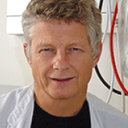Outcome and adverse events in patients with chronic hepatitis C treated with direct-acting antivirals: a clinical randomized study.
Mots clés
Abstrait
New potent direct-acting antiviral (DAA) regimens against hepatitis C virus have been approved in recent years. However, information about the rate of adverse events (AEs) across different DAA regimens is limited. We aimed to evaluate differences in AEs and treatment efficacy in patients with chronic hepatitis C (CHC), genotype (GT) 1 or 3, randomized to two different treatment arms, correspondingly.
We randomly assigned 96 patients in a 1 : 1 ratio, to treatment for 12 weeks with either paritaprevir/ombitasvir/ritonavir/dasabuvir/ribavirin (RBV) or ledipasvir/sofosbuvir (SOF)/RBV if infected with GT1 (72 patients) or to daclatasvir/SOF/RBV for 12 weeks or SOF/RBV for 24 weeks, if infected with GT3 (24 patients). Data on AEs were collected throughout the entire study period.
A total of 70 (97%) patients with CHC with GT1 and 20 (83%) patients with GT3 achieved cure. The GT3 treatment arm was prematurely terminated, owing to change in national treatment guidelines. Thus, only AEs for GT1 patients are described. AEs occurred in 70 (97%) GT1 patients, and most common AEs were anemia (n=56/78%), fatigue (n=53/74%), and headache (n=33/46%). No difference was observed in relation to treatment group (P=1.0), anemia (P=1.0), or liver cirrhosis (P=0.53). In seven (11%) patients, AEs assessed by the investigator to be possibly related to the DAA regimen were still present 12 weeks after treatment.
We found no difference in AEs possibly related to the DAA regimen in patients with CHC, but surprisingly, AEs possibly related to the DAA regimen persisted in a significant number of patients after treatment. This finding can be of importance for clinicians in relation to patient information concerning AEs possibly related to DAA treatment.


